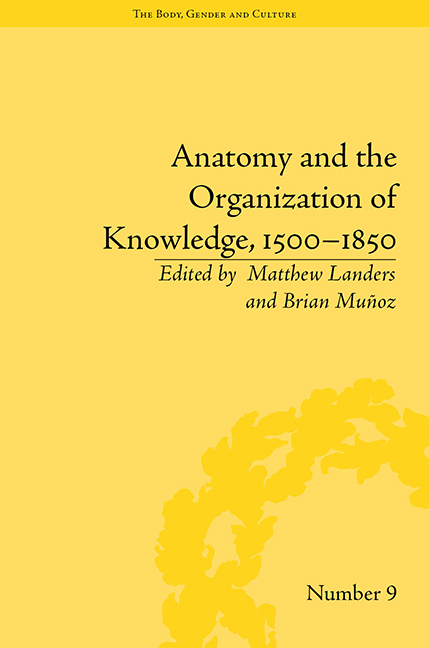Book contents
- Frontmatter
- CONTENTS
- List of Contributors
- List of Figures
- Introduction
- Part I The Body as a Map
- Part II The Collective Body
- Part III Bodies Visualized
- 10 Visualizing Monsters: Anatomy as a Regulatory System
- 11 Anatomy, Newtonian Physiology and Learned Culture: The Myotomia Reformata and its Context within Georgian Scholarship
- 12 Art and Medicine: Creative Complicity between Artistic Representation and Research
- 13 The Internal Environment: Claude Bernard's Concept and its Representation in Fantastic Voyage
- Notes
- Index
12 - Art and Medicine: Creative Complicity between Artistic Representation and Research
from Part III - Bodies Visualized
- Frontmatter
- CONTENTS
- List of Contributors
- List of Figures
- Introduction
- Part I The Body as a Map
- Part II The Collective Body
- Part III Bodies Visualized
- 10 Visualizing Monsters: Anatomy as a Regulatory System
- 11 Anatomy, Newtonian Physiology and Learned Culture: The Myotomia Reformata and its Context within Georgian Scholarship
- 12 Art and Medicine: Creative Complicity between Artistic Representation and Research
- 13 The Internal Environment: Claude Bernard's Concept and its Representation in Fantastic Voyage
- Notes
- Index
Summary
S'intese degli ignudi più modernamente che fatto non avevano gl'altri maestri innanzi a lui; e scorticò molti uomini per vedere la notomia lor sotto
[He] understood naked bodies in a way that was more modern than his predecessors; and [he] flayed many men in order to discover their internal anatomy.
What Antonio Vasari wrote on Anto nio del Pollaiolo's Ercole e Anteo (c. 1475), tempera on panel, Galleria degli Uffizi, Florence, bears witness to sweeping changes in the artistic representation of the human body at the end of the fifteenth century. This shift mainly concerned the image's construction, which was based not only on merely external observation, but also on the awareness of the internal organization of the body, which is made of muscles, along with specialized organs and bones. Starting with this crucial cultural moment, specifically from Masaccio's and Donatello's artistic experiences in representing the human body's internal systems, this essay diachronically examines the production of important wax modellers, active in the city of Bologna around the eighteenth century. A close look at some artists that worked for the ‘Accademia delle Scienze’, such as Ercole Lelli (1702–66), Giovanni Manzolini (1700–55) and Anna Morandi (1716–74), shows how this new approach to the study of the human body mutually affected both art and medicine, paving the way for a more comprehensive and detailed understanding of anatomic systems.
- Type
- Chapter
- Information
- Anatomy and the Organization of Knowledge, 1500–1850 , pp. 171 - 186Publisher: Pickering & ChattoFirst published in: 2014

